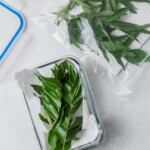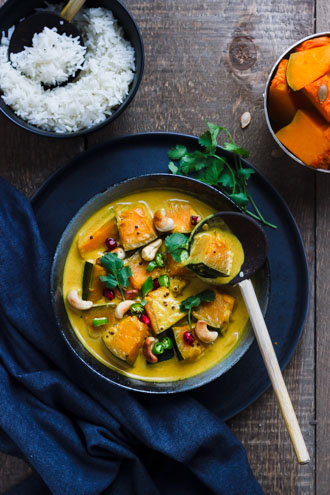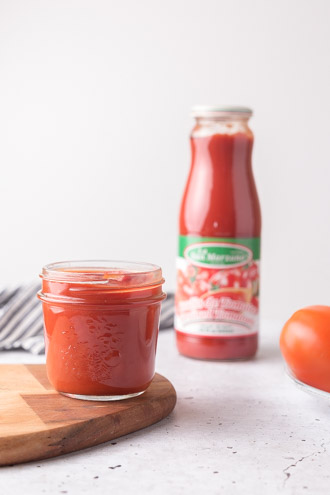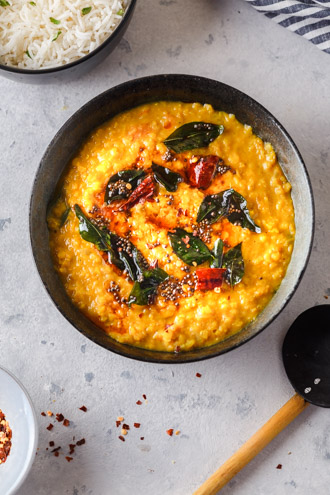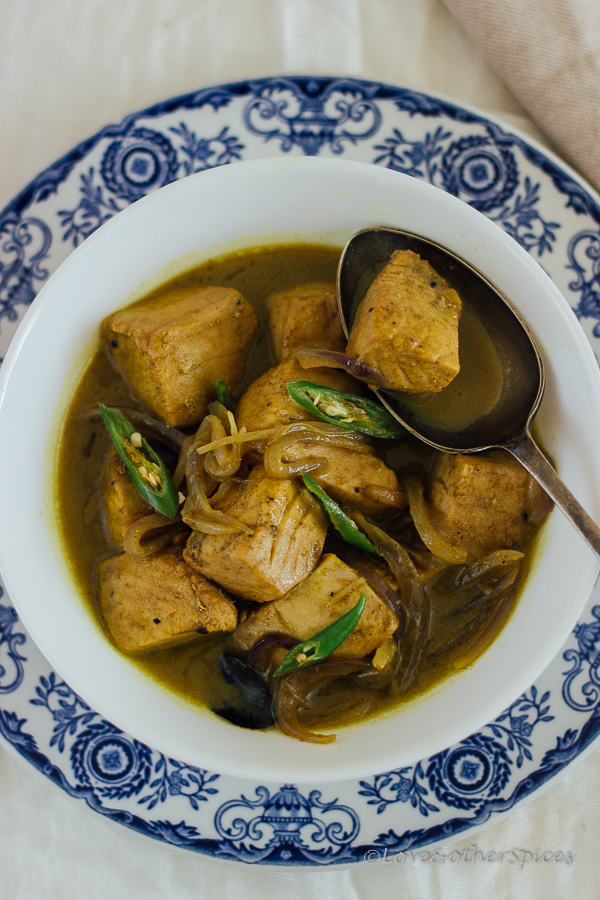What Are Curry Leaves? How To Buy, Use and Store
An essential herb in Sri Lankan and South Indian cuisines the aromatic curry leaves impart fragrance and subtle taste. It’s also known for its health benefits. Let’s explore what curry leaves are and how to use and store them to extend their shelf life.
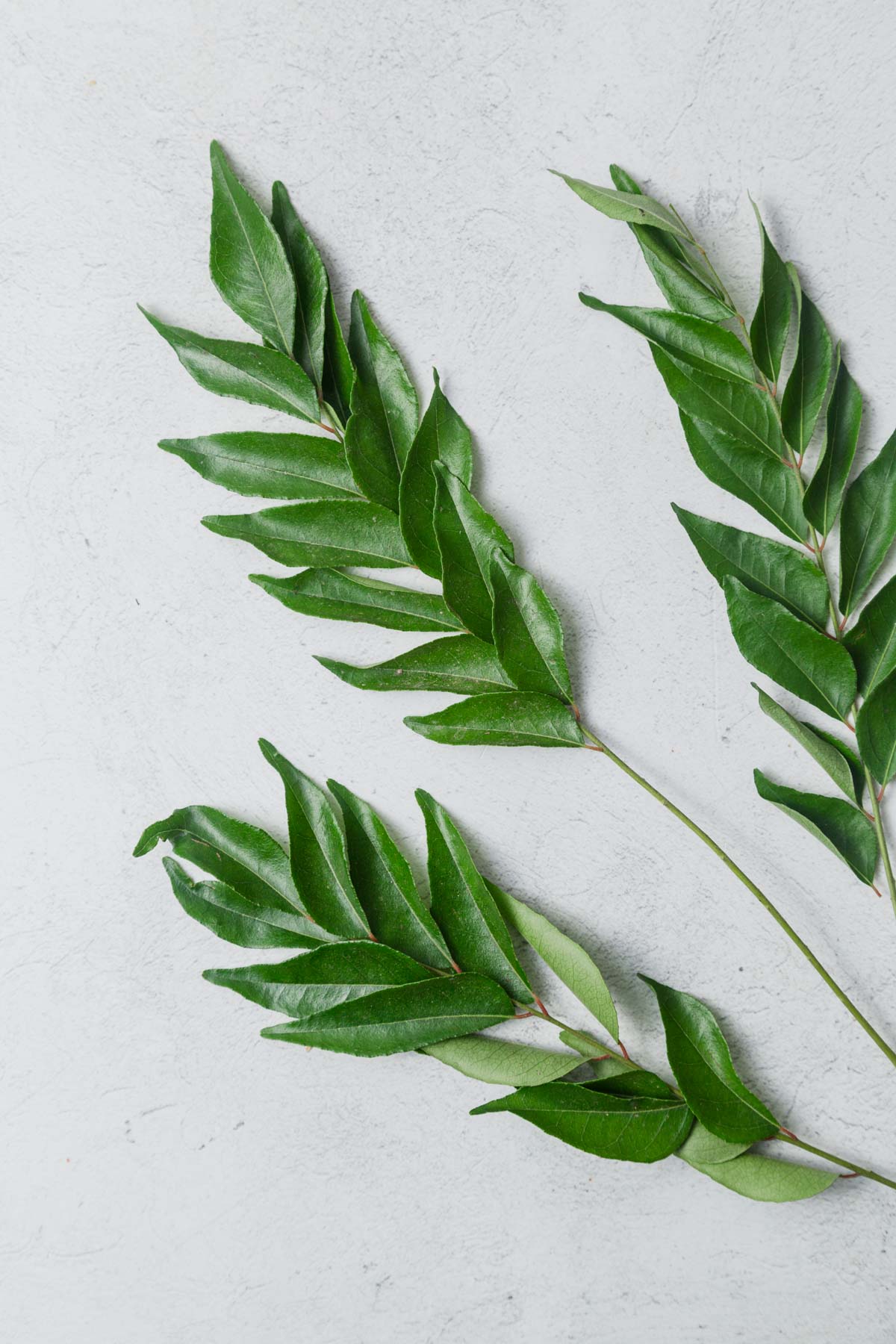
Jump to:
- What Are Curry Leaves?
- What is curry leaves flavor like?
- Benefits of Curry Leaves
- What is Curry Leaves in English?
- What are Curry Leaves Used For?
- What are Substitutes For Curry Leaves?
- Are Curry Leaves and Curry Powder the Same?
- Where to Buy Curry Leaves?
- How to Store Curry Leaves?
- How To Dry Curry Leaves?
- Recipe
What Are Curry Leaves?
Curry leaves, scientifically known as “Murraya koenigii”, are vibrant green, shiny, pinnate leaves from the curry leaf tree, a plant related to the citrus family and native to the Indian subcontinent, Sri Lanka and other tropical climates. They’re widely used in Sri Lankan, and South Indian cooking as well as in several Southeast Asian countries like Malaysia and Cambodia.
We call them karapincha(Sinhalese) and kariveppilai(Tamil) and it’s also called kari patta or kadi patta in Hindi.
The most popular way to use fresh leaves in a dish is to sauté them in hot oil along with other aromatics like onion, ginger, and garlic to extract the flavor and aroma to the dish. The leaves are picked out when eating the dish.
It’s also used in tadka or tempering where you saute mustard seeds, curry leaves, and whole red chillies in oil to add to dishes after they’ve been cooked for more flavor and taste such as my Sri Lankan dal curry.
If you’ve ever been to a Sri Lankan or South Indian restaurant, you’ll find curry leaves in most of the dishes. It’s not widely used in North Indian cuisine. So you won’t see curry leaves in dishes like butter chicken and tikka masala etc.
What is curry leaves flavor like?
The curry leaves taste like a mix of anise, citrus and earthy flavors. They’re mildly spicy. The after taste has a hint of bitterness but very slightly. Their unique flavor is difficult to replicate with any other ingredient.
Curry leaves are too fibrous and they’re not eaten fresh or used as a garnish. They have a distinctive fragrance especially when crushed or cooked.
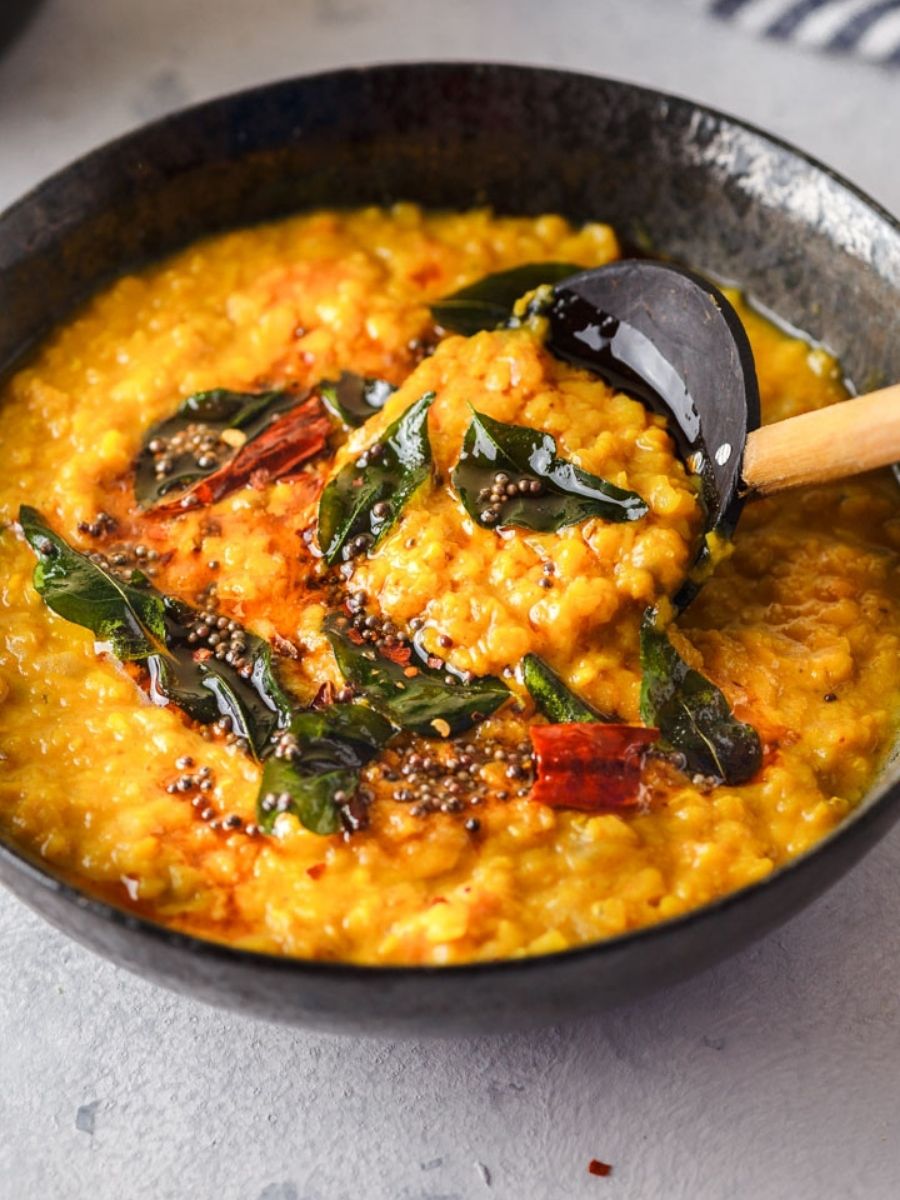
Benefits of Curry Leaves
- Cooking: This aromatic ingredient is used in a wide variety of dishes to add flavor, taste, and aroma like curries, rice, and chutneys.
- Nutritious: They’re a rich source of antioxidants, vitamins, and minerals, including vitamin A, vitamin C, calcium, and iron.
- Digestion: Curry leaves have been traditionally used to aid digestion and prevent constipation.
- Hair health: Curry leaves infused oils are used to promote hair growth and maintain healthy hair and scalp.
- Diabetes: They’re also used to prevent diabetes, cholesterol and insulin resistance in traditional or Ayurvedic medicine.
What is Curry Leaves in English?
The term “Curry Leaves” is the common English name for the herb derived from the curry leaf plant, is also called “sweet neem leaves”.
What are Curry Leaves Used For?
- Flavoring curries: They’re often added to the cooking oil at the start of cooking to release their flavors and infuse the curry. They’re not the same as curry powder and cannot be used interchangeably. The leaves are used both in meat and vegetable dishes.
- Seasoning oil: It’s used in tadka or seasoning oil along with mustard seeds and red chilies to drizzle over dishes, especially lentils. Dishes that use tadka are:
- Sri Lankan Dhal Curry
- Savory Oatmeal – I like to use tadka to flavor my savory oatmeal or steel-cut oatmeal.
- Spice mix: Curry leaves are used in spice mixes as in our Sri Lankan Roasted Curry powder. Dried curry leaves can be powdered and added along with other spices for medicinal benefits.
- Chutneys and dips: Curry leaves are blended together with coconut, tamarind, and other ingredients to make flavorful chutneys and dips. The curry leaves coconut chutney pairs well with dosas, idli, and vada.
- Rice: Curry leaves can be added when cooking yellow rice, ghee rice, lemon rice, and biryani. I like to add a few curry leaves when cooking Basmathi rice for flavor.
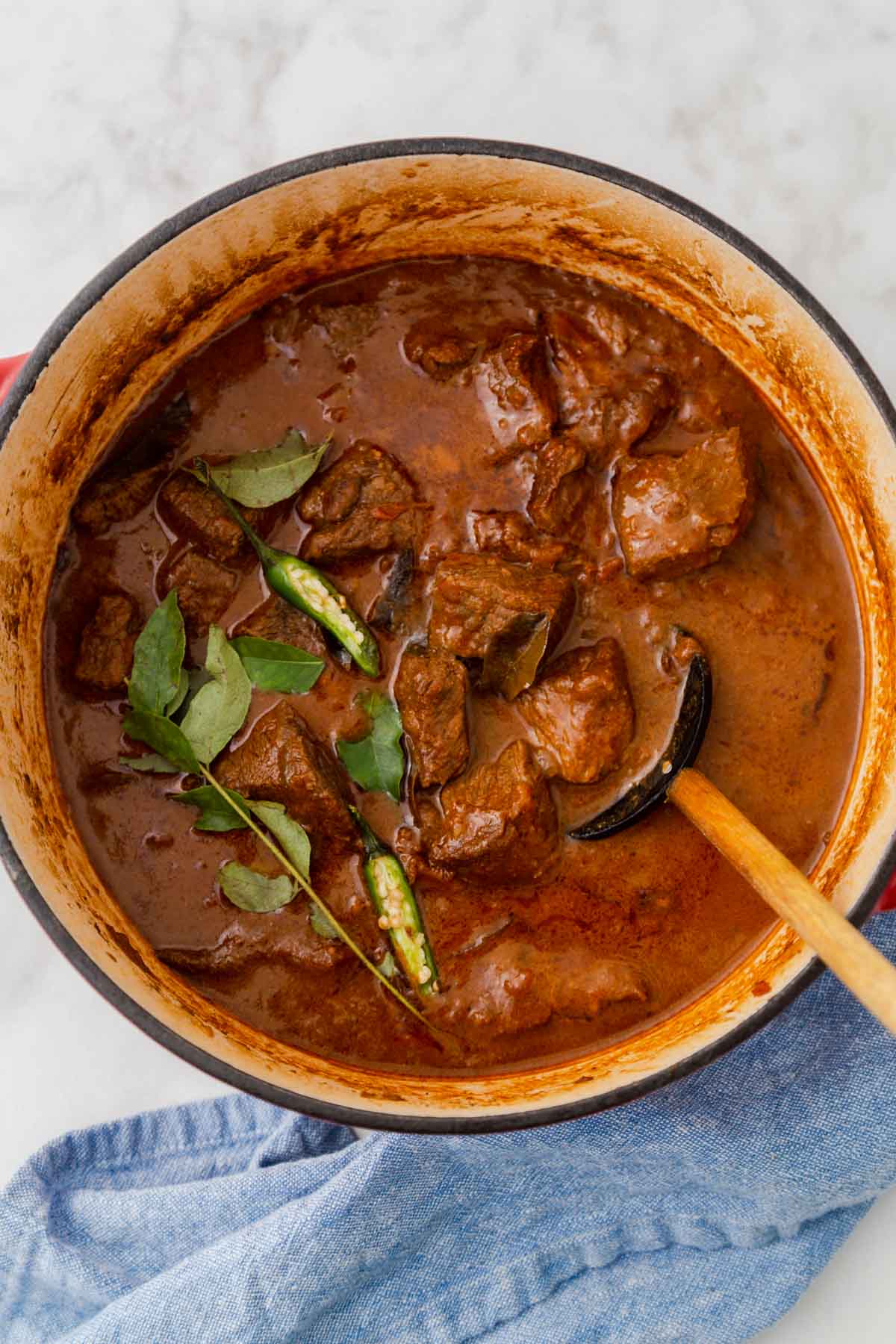
What are Substitutes For Curry Leaves?
There’re no good substitutes for curry leaves. Even though you’ll find many substitutes listed for curry leaves on the internet, I haven’t found a good substitute.
You can substitute them with Bay leaves in a pinch for tadka, sauteing, or when cooking rice.
You can leave them out of a recipe if you can’t find them unless curry leaves are one of the main ingredients.
Are Curry Leaves and Curry Powder the Same?
No, curry leaves and curry powder are not the same. While they both have “curry” in their names, they refer to different ingredients.
Curry leaves are dark green leaves from the curry tree.
On the other hand, curry powder is a spice blend. It is a mixture of ground spices, including turmeric, cumin, coriander, fenugreek, and others. This is what gives the “curry” taste to dishes.
While curry leaves and curry powder may be used together in some recipes, they serve different purposes. Curry leaves primarily provide a fresh, citrusy flavor, while curry powder is a combination of dried spices that creates a more complex and robust taste.
In my Sri Lankan Roasted Curry Powder recipe, I use curry leaves along with other spices.
Where to Buy Curry Leaves?
Fresh curry leaves are found in most big box stores now such as Walmart. Asian and Indian grocery stores will surely carry it. You can also buy dried curry leaves online from Amazon or other retailers.
Fresh curry leaves are best if you can find them. Dried curry leaves can be used in a pinch but they lack the strong aroma and flavor the fresh one has.
How to Buy Curry Leaves?
When buying curry leaves keep these tips will help you buy the freshest:
- Look for bright green leaves without any blemishes.
- Avoid buying prepacked curry leaves that has dark green or black leaves. This could be due to extra moisture or they’ve been sitting there for too long.
How to Store Curry Leaves?
I recently received a big bag of fresh curry leaves from a friend and I was so excited. I have enough curry leaves for months and so many ways to store them. Depending on their use, you can store curry leaves in a few ways.
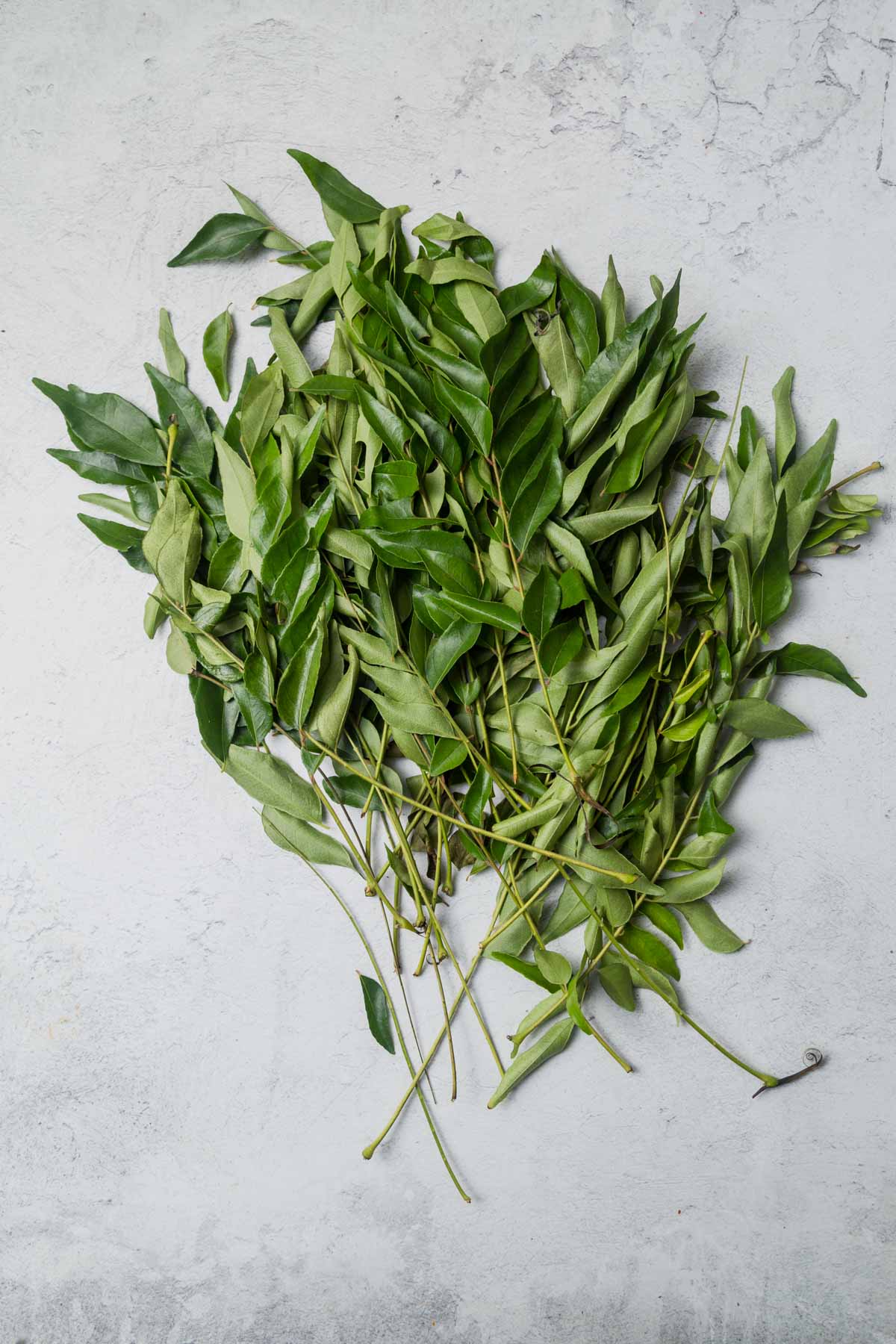
In the Refrigerator
The most common method of storing curry leaves is in the refrigerator. It will stay fresh for about 2 weeks. If I have a small bunch of curry leaves I keep them in the fridge.
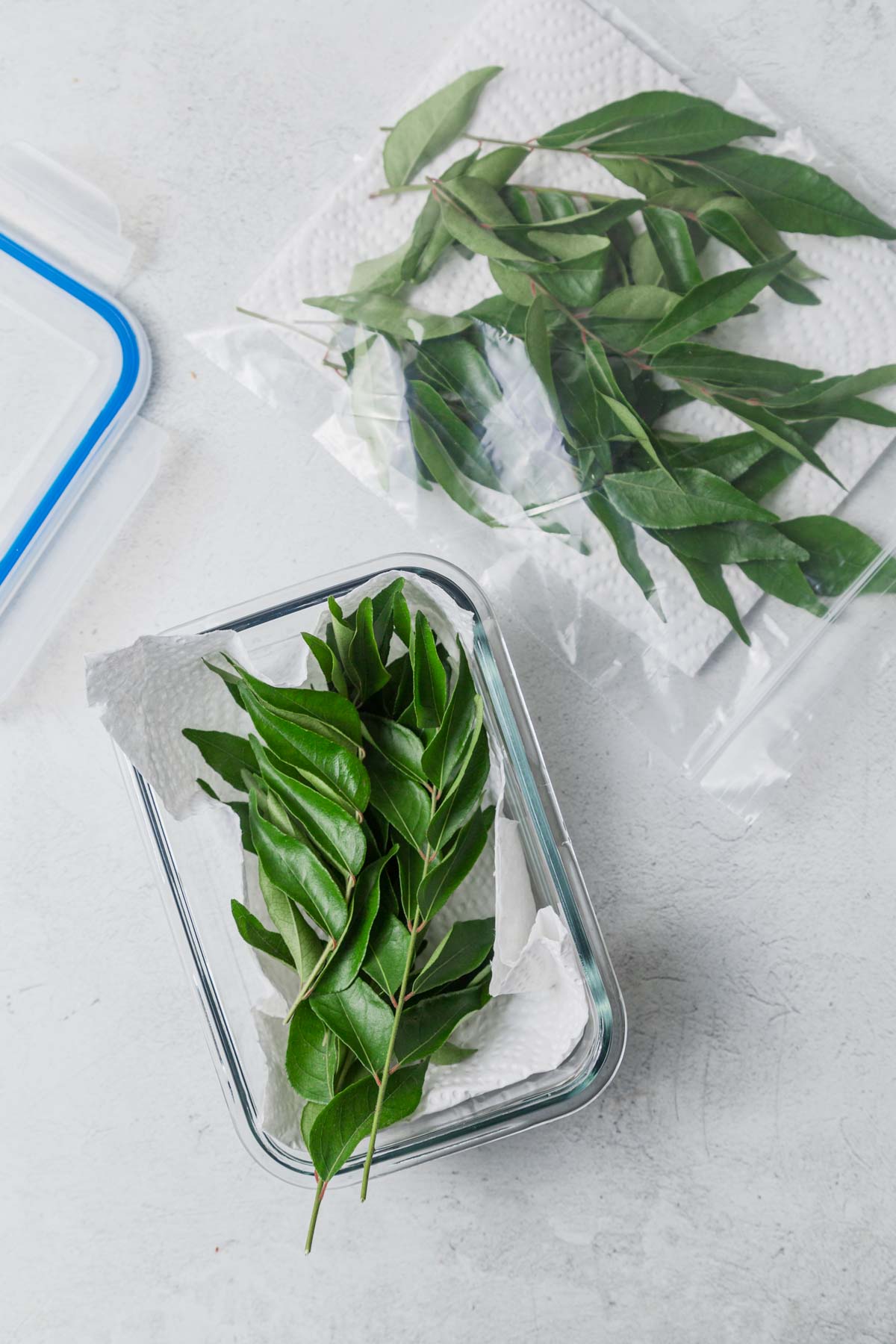
Here’s how to store curry leaves in the refrigerator:
- If there’s any dirt in the curry leaves, rinse them under running water.
- You can place the curry leaves in a colander, to let the water drain.
- Wipe them with a paper towel or a kitchen towel to remove excess moisture.
- Place the curry leaves in an airtight container or a ziplock bag along with a paper towel.
- Store in the fridge for 2 weeks.
If there’s no dirt and the curry leaves look clean, you can straight away put them in an airtight container along with a paper towel and store them in the fridge. The paper towel helps to absorb any moisture from the leaves so they stay fresh longer.
In the Freezer
If you have a large bunch of curry leaves or want to store them for longer, freezing is the best option. The curry leaves last for a long time.
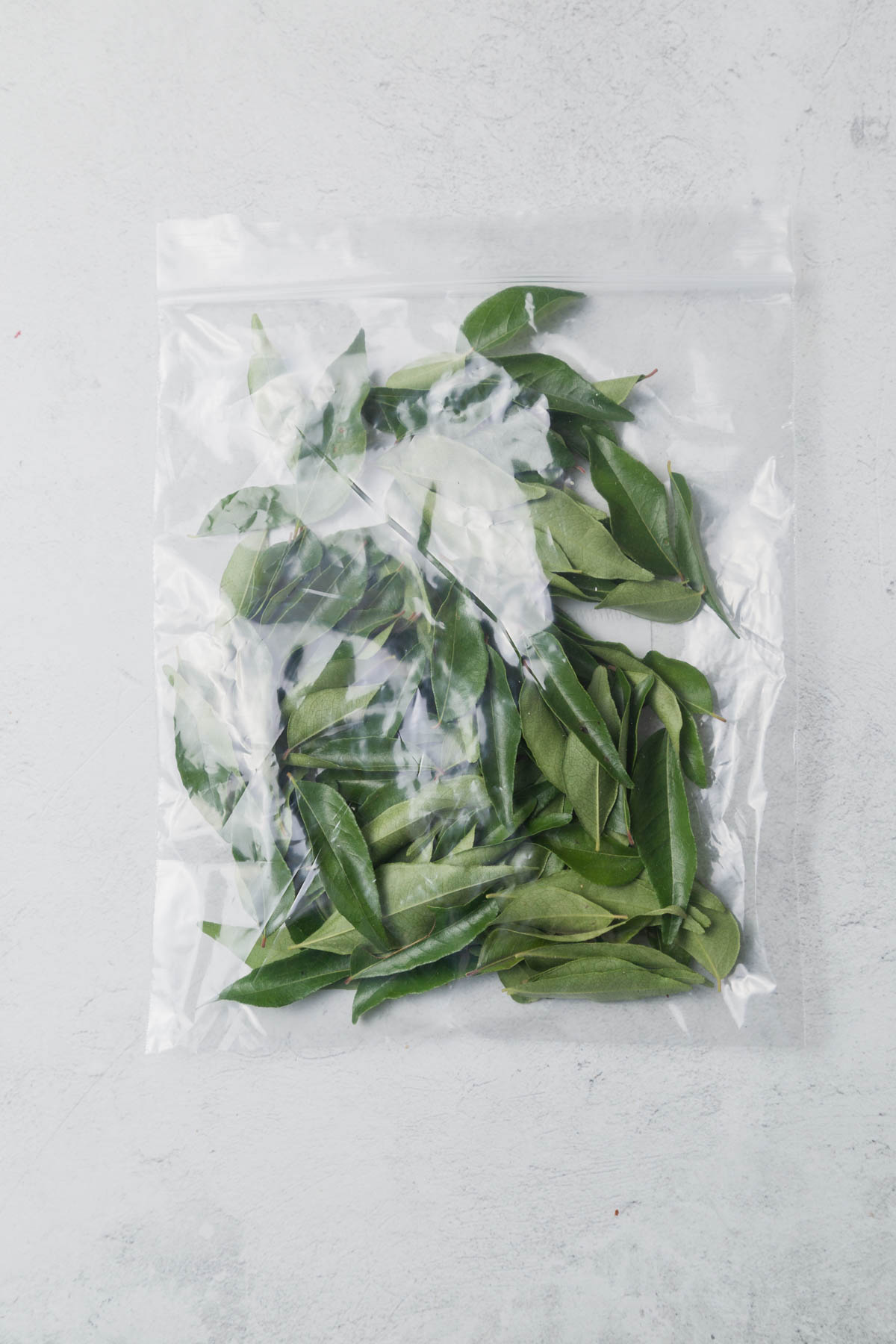
If your curry leaves have dirt you can follow the same steps as above to clean them. Once cleaned, remove the leaves from the stem. Place the leaves in a freezer-safe bag and store them in the freezer for up to 3 months.
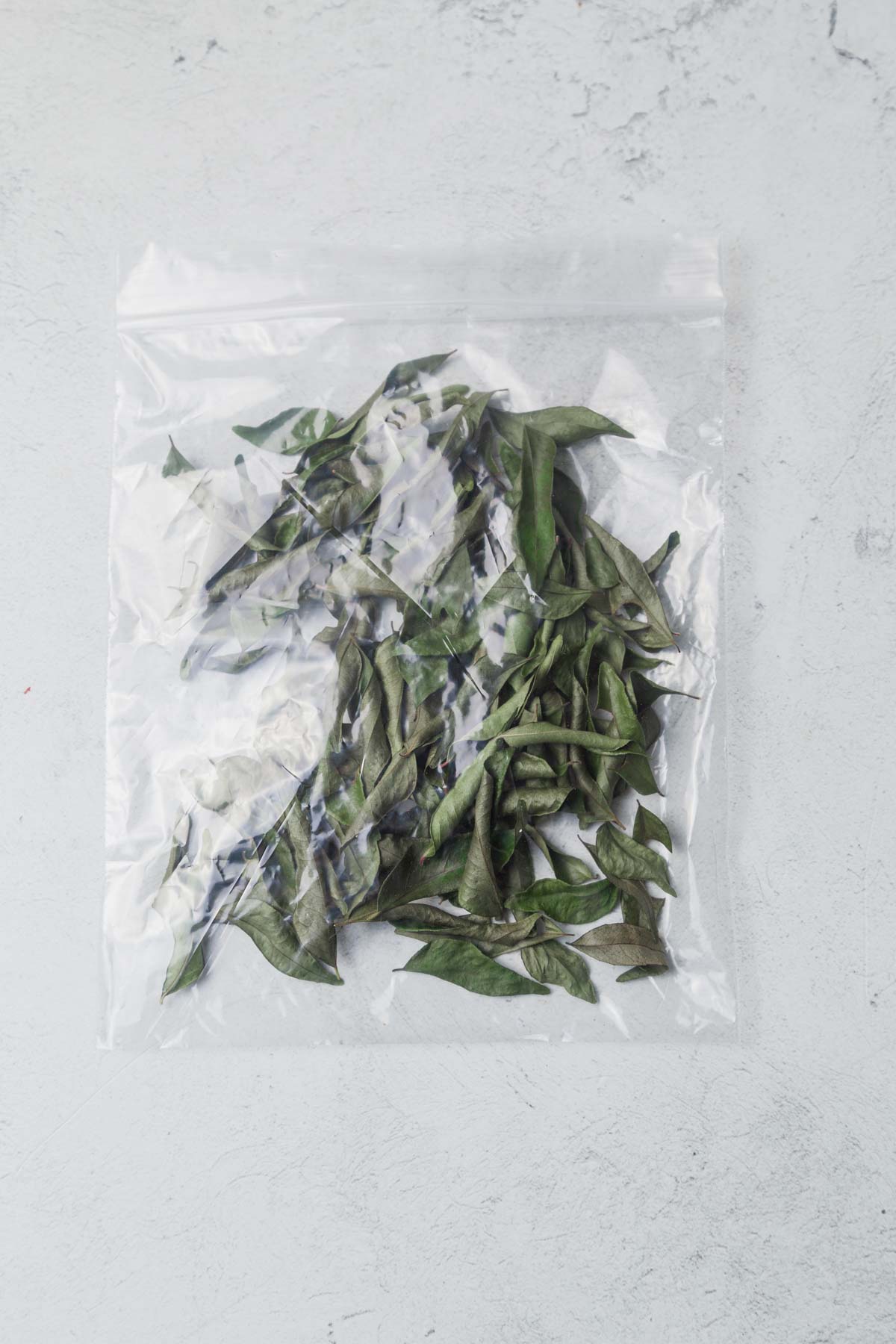
One important to note is that when you freeze the leaves, they will dry out and no longer will be vibrant green. This does reduce the intensity of the taste and smell of curry leaves slightly. You can use a little more curry leaves than a recipe calls for in this case.
How To Dry Curry Leaves?
Apart from the fresh herb, the dried curry leaves for are used for their benefits. The most common use of dried leaves is to infuse them with coconut oil to make a mineral-rich hair tonic. They can also be used for cooking or making powdered curry leaves. Powdered curry leaves are used in traditional medicine to treat various ailments.
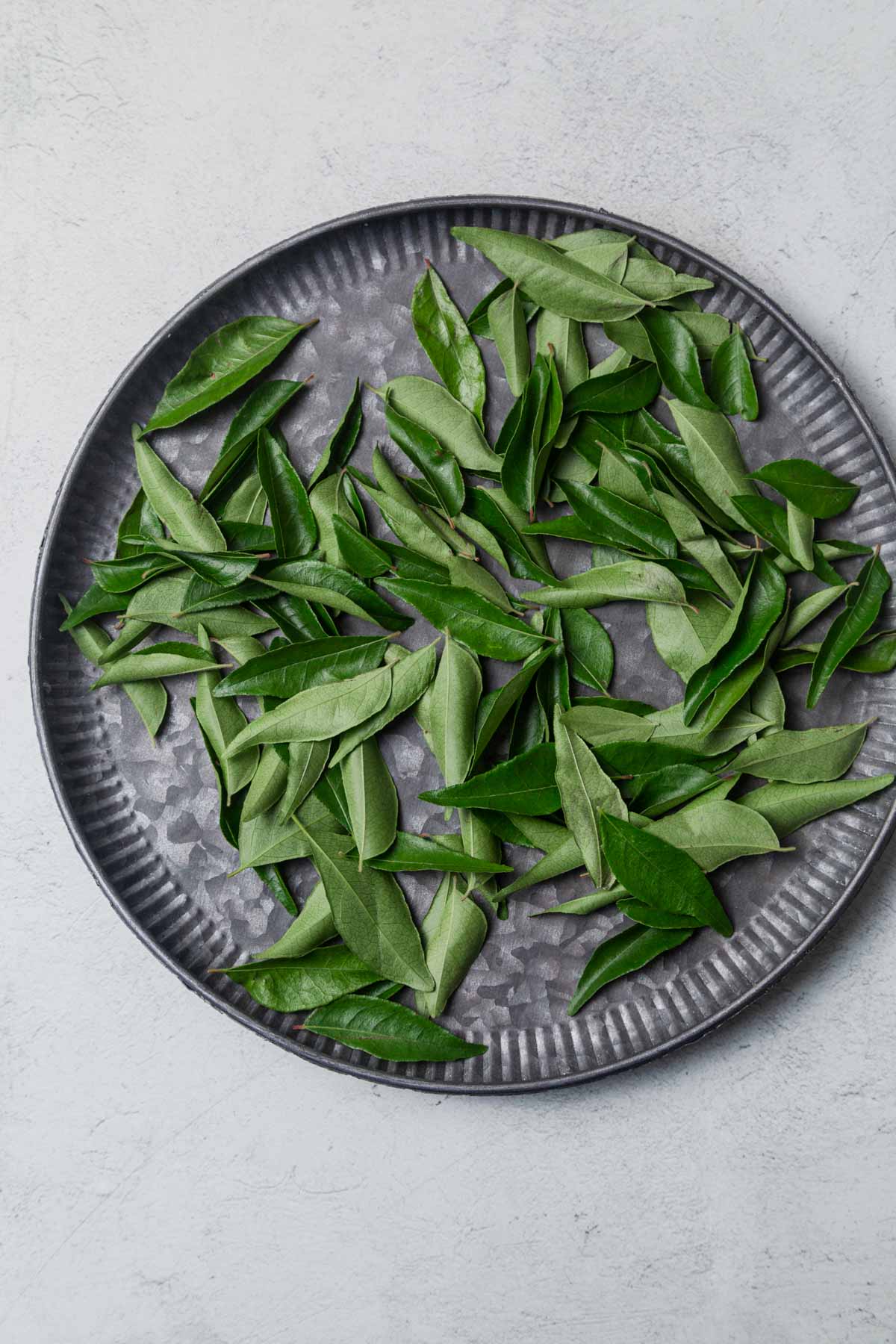
To dry the curry leaves, spread them in a single layer on a large tray. Keep them in the full sun for a few days until they’re fully dried and easily crumbled. You can cover the tray with a net to prevent the curry leaves from scattering or to keep the flies away.
Process the dried leaves in a blender to get a fine powder.
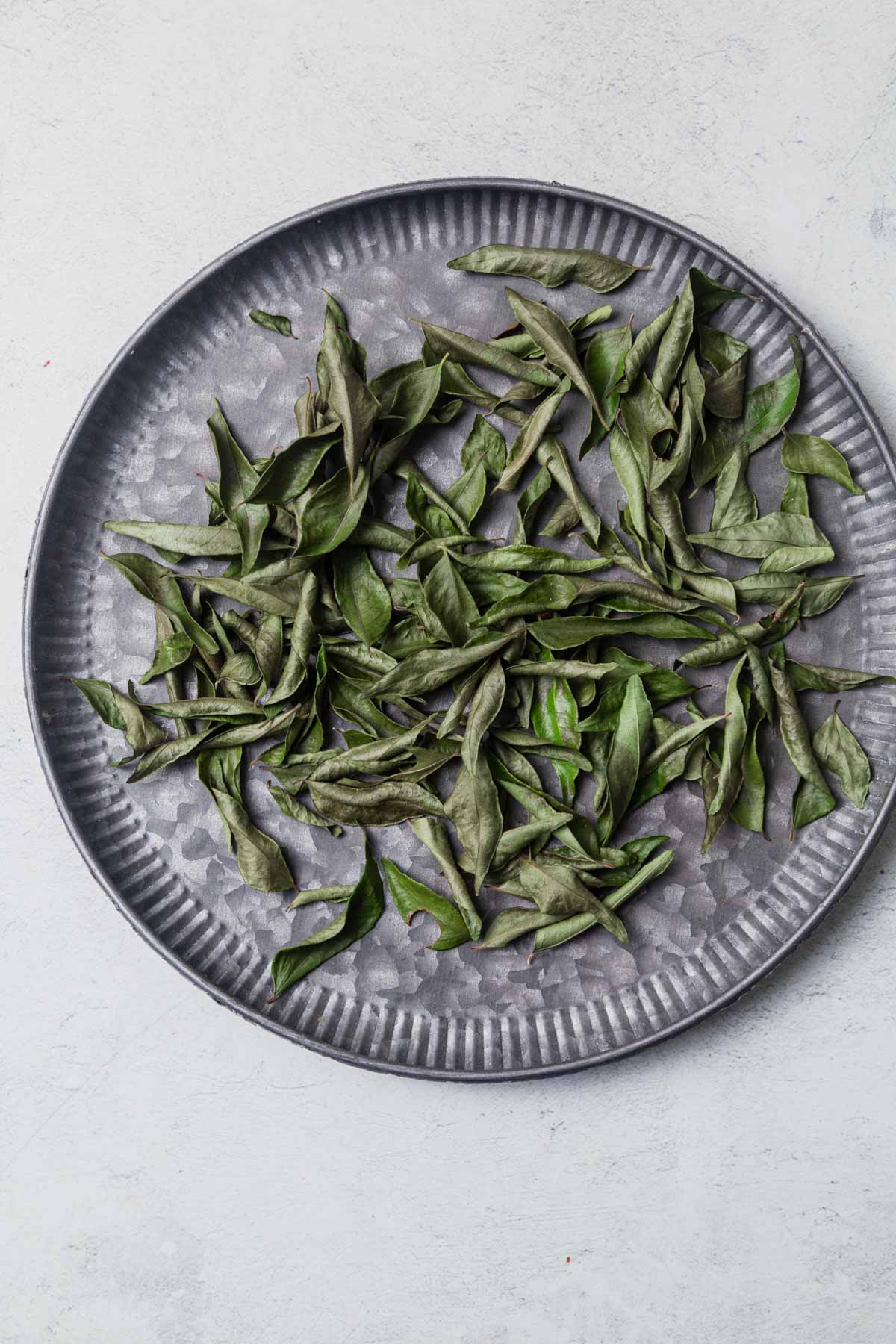
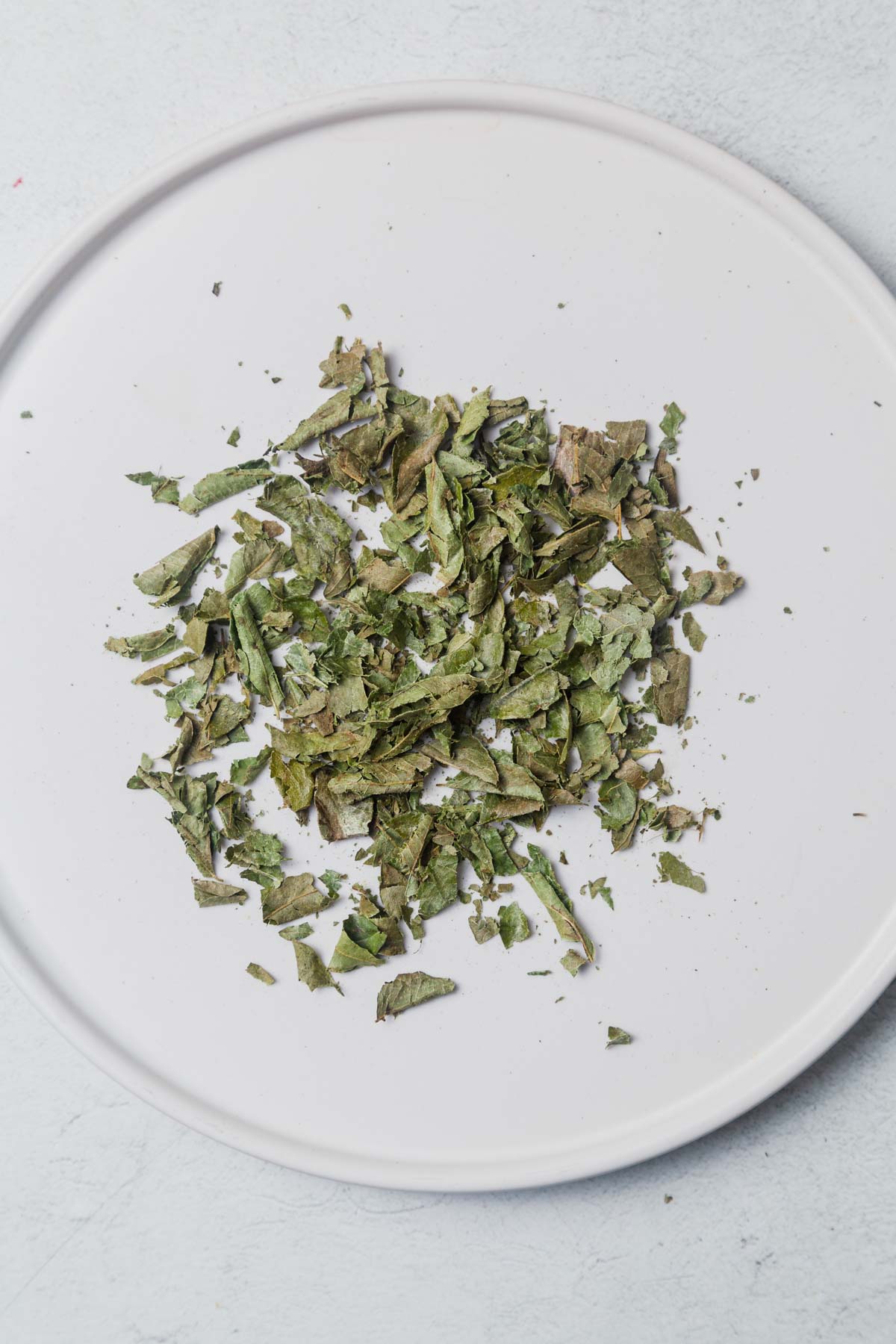
Another alternative is to use a dehydrator if you have one, to dry the curry leaves. Or leave the curry leaves at room temperature and they’ll eventually dry out.
Love air frying? You can also follow us on Facebook, Instagram, or join our Free Facebook Air Frying Group.
Recipe
How To Store Curry Leaves
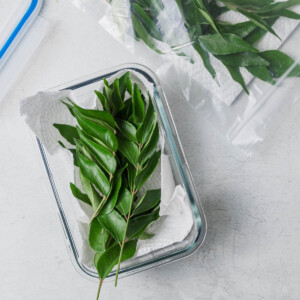
Ingredients
- Curry leaves
Instructions
In the Refrigerator
- If there's any dirt in the curry leaves, rinse them under running water. You can place the curry leaves in a colander, to let the water drain. Wipe them with a paper towel to remove excess moisture.
- Place the curry leaves in an airtight container or a ziplock bag along with a paper towel. Store in the fridge for 2 weeks.
In the Freezer
- Once cleaned, remove the leaves from the stem.
- Place the leaves in a freezer-safe bag and store them in the freezer for up to 3 months.
Drying Curry leaves
- To dry the curry leaves, spread them on a large tray. Keep them in the sun for a few days until they're fully dried and easily crumbled. You can cover the tray with a net to prevent the curry leaves from scattering or to keep the flies away.
- Alternatively, dry them in a dehydrator. Or storing them in room temperature will eventually dry them out.

